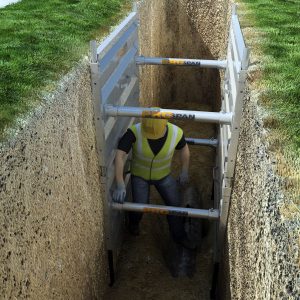 Trench boxes, also known as trench shields, save lives by providing crucial protection to workers in excavation projects. These sturdy structures prevent soil collapse, which is a leading cause of trench-related accidents and fatalities. By supporting the walls of the trench, trench boxes create a safer working environment, reducing the risk of cave-ins and burial accidents. Their presence ensures stability and allows workers to carry out their tasks with confidence, minimizing the chances of injury or death due to collapsing soil. Trench boxes are essential safety equipment, playing a vital role in safeguarding workers’ lives in excavation operations.
Trench boxes, also known as trench shields, save lives by providing crucial protection to workers in excavation projects. These sturdy structures prevent soil collapse, which is a leading cause of trench-related accidents and fatalities. By supporting the walls of the trench, trench boxes create a safer working environment, reducing the risk of cave-ins and burial accidents. Their presence ensures stability and allows workers to carry out their tasks with confidence, minimizing the chances of injury or death due to collapsing soil. Trench boxes are essential safety equipment, playing a vital role in safeguarding workers’ lives in excavation operations.